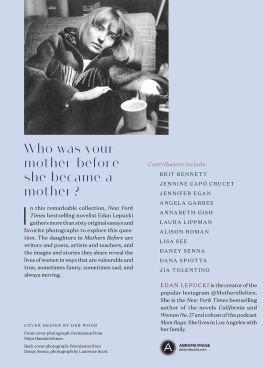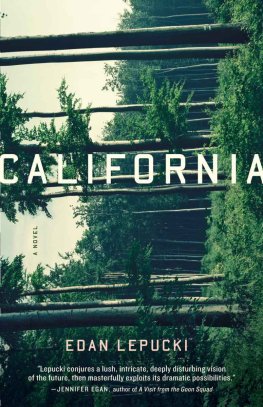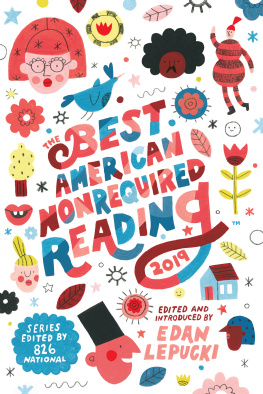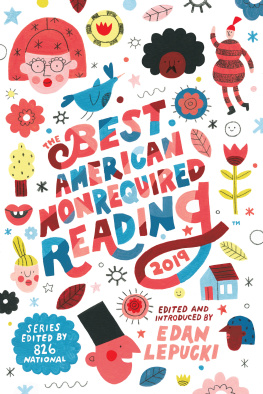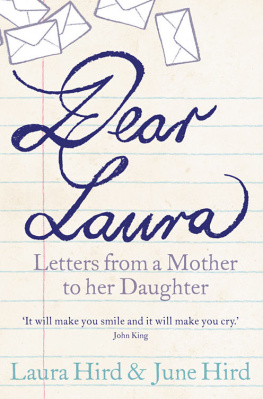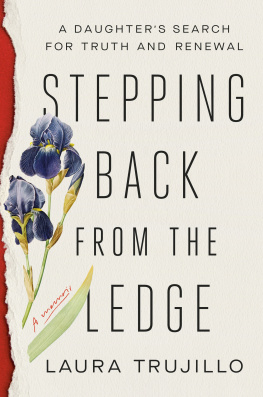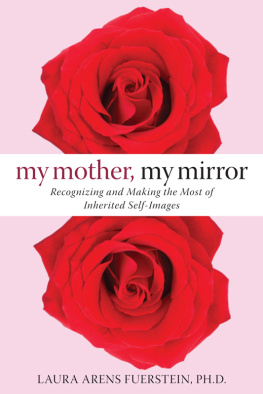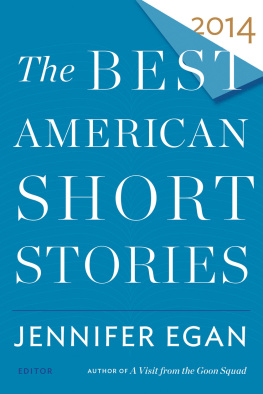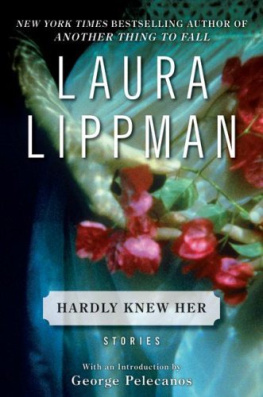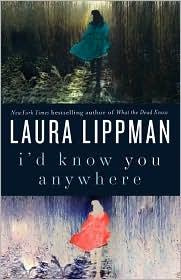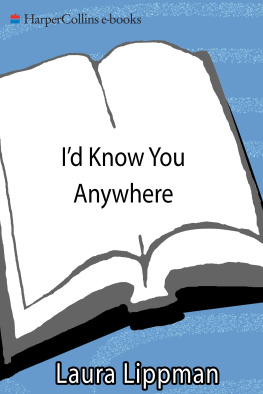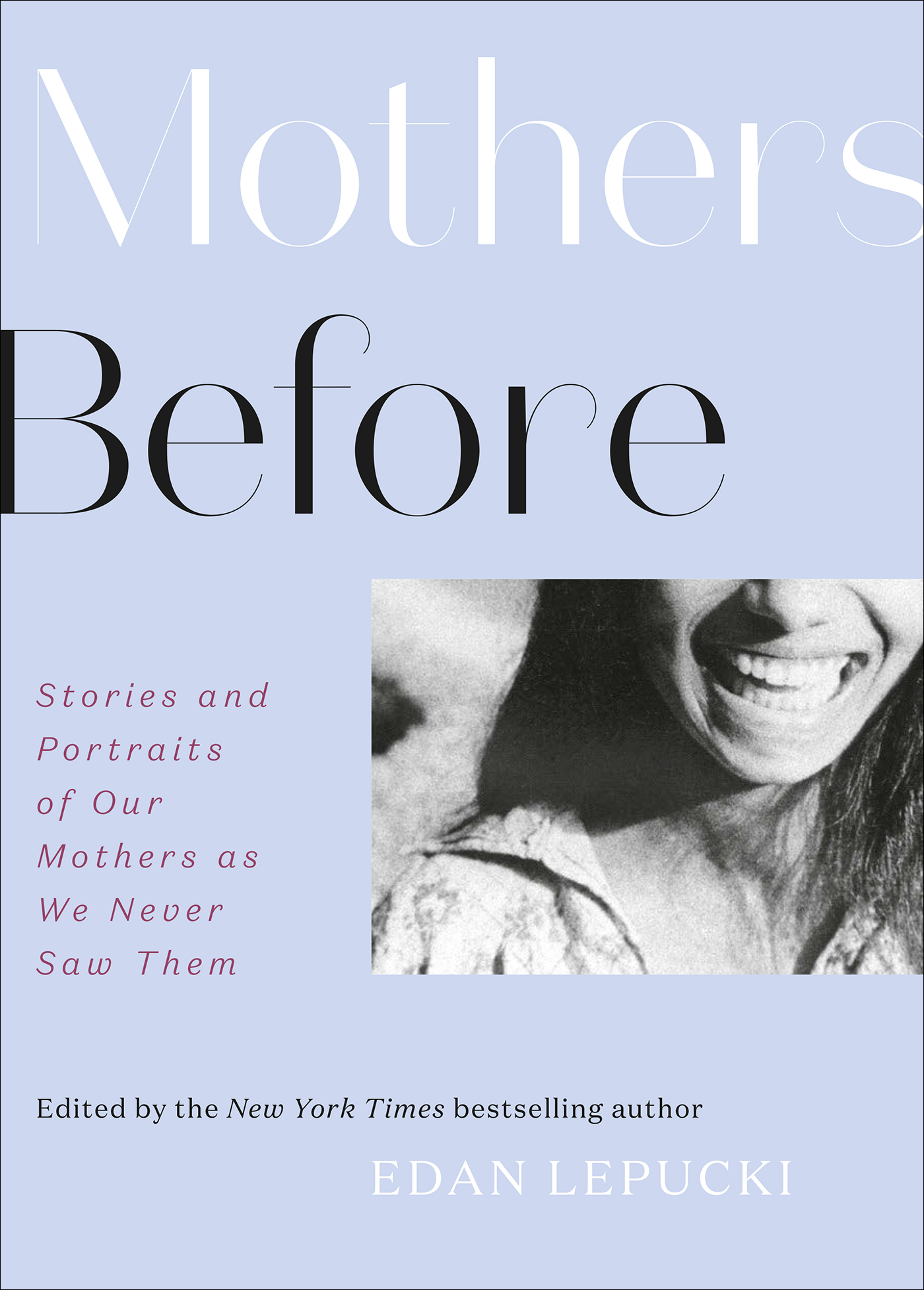
Circa 1999
Introduction
Mothers are difficult to describeor at least mine is.
I try to tell people what my mom is like: That she possesses an unwavering confidence in her parenting, as she should, having raised five children and helped to take care of six grandchildren as well as various kids who arent related to her. That she loves to read fiction, all kinds, from the commercial to the turgid. That she wears diamond earrings the size of raisins but grew up sharing one bathroom with her parents and five siblings in a blue-collar New Jersey town. That in high school she designed some of her own clothing and, for nearly my whole life, collected beautiful shoes, but that she now prefers to wear her no fuss cooking T-shirts and has become pathologically devoted to FitFlops.
My mother is efficient and practical. She is content and perpetually optimistic. She doesnt curse. She giggles at her own jokes. She never loses control. She can prepare a meal for fifteen while maintaining her kitchens spotlessness. She will tell you about various hotel lounges even after youve said the descriptions are too boring to bear. She has traveled the world and, because iced tea isnt an international phenomenon, knows how to ask for hot tea with ice cubes in about ten languages. Even a recent fall in Poland, which required stitches to her forehead, has not dampened her wanderlust. She will talk to strangers everywhere. She is the least judgmental person I know, particularly about her children. She has never expected me to be anyone but who I am.
Maybe because Im a novelist, Ive long wished I could write a fictional version of my mother that truly captures her complicated essence. But I cant. Even this list of details barely scratches the surface of who she is. Whatever I wrote would be a paper doll compared to my real mother. Theres so much to her!
In 2015, however, I did publish a novel that featured mother-daughter relationships, called Woman No. 17, though it wasnt a depiction of my own relationship with my mom. To promote the book, I decided I would create an Instagram account that invited women and nonbinary people to share photos of their mothers before they became mothers. Their captions, just a couple of sentences long, would tell us about their mom: about the image of her, or about whats occurred in the decades since the shutter opened, then closed. They would tell us how they felt about their mother. The project, I hoped, would offer glimpses of this most seminal relationship, whether it be easy or fraught or beautiful or damaged or intimate or distant or all of that at once.
The Instagram account, which shares the same title as this book, showcases all kinds of mothers, from the mysterious to the consistent, from the cruel to the saintly. There are mothers across many eras and many countries. The lives recounted are fascinating, as are the daughters feelings. The account became its own work of art, unrelated to my novel. It was more popular than I imagined it would be, and when I got the opportunity to take the premise of the Instagram account and transform it into a book, I was excited because I knew the expanded format would provide me with new perspectives on the project.
Since the Instagram accounts inception, Ive thought a lot about why it has captured peoples attention. Honestly, I shouldnt have been surprised by its popularity. Im not only a daughter, Im also a mother myself, and I am deeply interested in how this relationship shapes how we perceive ourselves. Its why I wrote my novel, I suppose. But my fascination is not uncommon. We all want to know about one anothers mothers: the ways she nurtured you or failed you. How her death changed you. Her piece of tossed-off advice that you will never forget. Perhaps, most importantly, how that story of her as a young woman has followed you around your whole life. Did it serve as inspiration? A cautionary tale? A riddle?
What Ive come to realize about this project is that its not only about motherhood and the mother-daughter relationship; its also, at its heart, about representing the female experience in all its complexity and shedding light on the limited ways we might, as daughters and as a society, interpret that experience. How daughters talk about their mothers before they became mothers illustrates what we value in womenyounger women, specifically, or, even, exclusively.
As I wrote in the New York Times about the project, Pluck, sex appeal, power, kindness, persistence: We admire and celebrate these characteristics, and we long for the past versions of our moms to embody them. But if these characteristics are a prerequisite for a properly executed womanhood, does becoming a mother divest a woman of such qualities? When motherhood is a part of a womans narrative, it often becomes a before-and-after dividing line. Looking closely at an old photo of your own mother and asking yourself who she was then, and who she is now, asks you to blur that line a little. To take in the whole of her life, the whole of her self. This, in turn, allows us to do the same for our own lives and selves.
I gave the talented contributors of this collection very few parameters: Send me a photo of your mom and write about it in 100 to 800 words. I hoped these micro-essays would capture not only a mothers life but a specific way to read that life, for we cant disconnect these stories from their tellers. I wanted this fact to be central to the book. As daughters, we are always reading our mothers, and our perspective will always be both flawed and privileged. We are too close to the subject, not nearly neutral enough, weve got too much skin in the gameand, because of this, our gaze is powerful.
Between the covers of this book are images of elegance, gumption, innocence, knowingness, frailty, naivete, willfulness, beauty, strength, resilience, vulnerability, triumphand more. What came into focus for me as I read the pieces that accompanied these images was how much work it takes to connect with our mothers before. It takes respect and compassion to consider the woman we will never get to know and to try and square her with the woman we do know, and to accept that not all the discrepancies will be resolved. For some of the contributors, their experience of reading their mothers is a celebration. For others, its a reckoning. Either way, its work. Its an effort of love.
These pieces also shed light on how we cannot wrest a person from her circumstances or the facts of her identity. As Jennifer Egan writes, I sometimes wonder what kind of life my mother would have had if shed been born ten, or even five, years later. Havent we all considered how our mothers were molded by the gender constraints of their eras? In Egans case, her mothers looks dictated her trajectory: My mom is a beautiful woman, she writes, and in 1950s America, beauty like hers must have felt like destiny.
Gender is just one facet of experience for many of these mothers. In her piece, Camille T. Dungy writes of her familys roots in Lynchburg, Virginia: The members of Court Street Baptist Church started a library fund to help my black mothers black father buy the books he needed to preach the sermons his black parishioners needed to hear every Sunday in that deeply segregated, often hateful town. The repetition of black is instructive here: Dungy doesnt separate race from historical fact because theyre inextricable, as is the racism that pervaded her mothers childhood. Dungys piece reminds us that the outside worldfor many an inhospitable, cruel placewill make its way into our personal lives. However, like Egan, Dungy acknowledges that her mother thrived despite these circumstances; in the photo, she recognizes the origins of my mothers deep pride and joy: her sense of connection with the people who love her and whom she loves.

